Art & Exhibitions
Martha Tuttle’s Tilton Gallery Show Breaks From Millennial Stereotypes
The 26-year-old artist is wild about weaving.
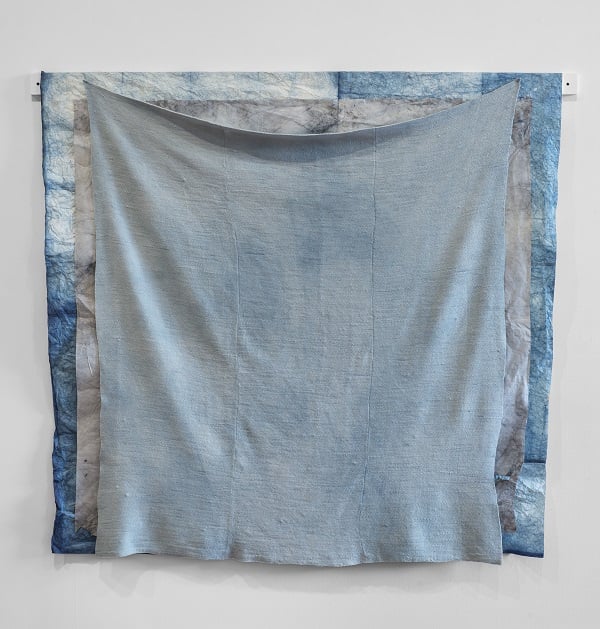
The 26-year-old artist is wild about weaving.

Cait Munro

While mass production and digitization continue to dominate the contemporary art conversation, 26-year-old Martha Tuttle, whose first solo show in New York is currently on view at Tilton Gallery, is doing something refreshingly measured and tactile. Using paper, natural dyes, and tapestries that she weaves herself, Tuttle’s wall hangings exist in that strange space between painting and sculpture. You might even say her work is reminiscent of craft—and that would be completely alright with the artist.
“It’s important to me to be able to touch every part of something that I make,” said Tuttle. “I find that if I spend a long time with something, it heightens that relationship that I have with it.”
The artist’s layered textiles feature thick paper dyed using natural pigments, weavings crafted from hand-spun wool, often beaten for hours with a mallet to achieve an almost impossible thinness, and iron filings perfectly shaved to lend a subtle glittering effect. Even her smallest compositions take over 24 hours to make, largely due to the rigorous, multi-step process of dying the fabrics.
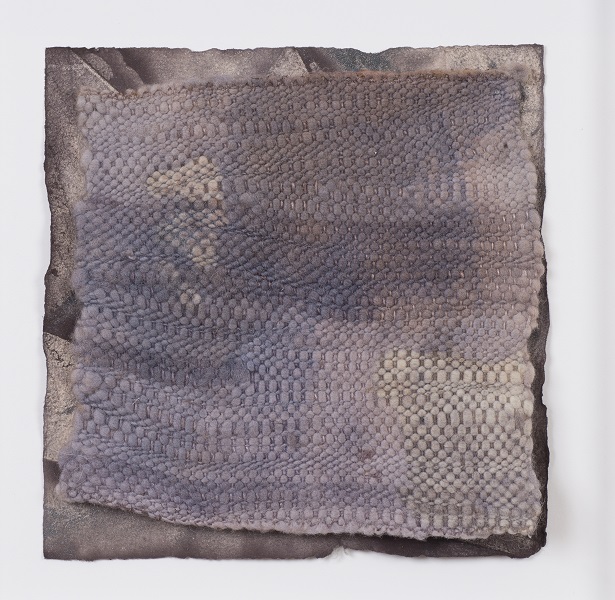
Martha Tuttle, Cold Water (2015).
Photo: Jack Tilton Gallery.
Weavings and textiles have been historically marginalized as a medium, associated more with craftmaking and outsider art than with the kind of thing you’d be likely to find in a blue-chip contemporary art gallery. But Tuttle sees this departure as an asset.
“Something that I really love about weaving and the processes that I use is that the places that I need to go to learn about them are outside the art world, and having that ability to go back and forth between what people identify as ‘craft artists’ and ‘fine art artists’—and, of course, that’s blurred all the time—but that’s been really awesome,” she said.
That cloistered, art-world-insider mentality is notably harder to avoid for Tuttle than for most artists her age, as she happens to be the daughter of post-minimalist artist Richard Tuttle and award-winning contemporary poet Mei-mei Berssenbrugge.
“I never really rejected it,” she said about following in her father’s path, “but I had to find my own way into it.”
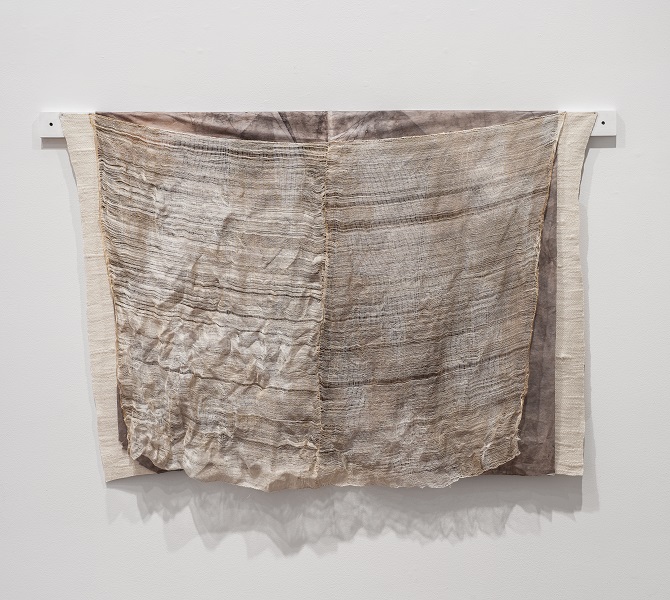
Martha Tuttle, Pines and Plovers (2015).
Photo: Jack Tilton Gallery.
Tuttle, who got her MFA from Yale in 2015, once considered going into medicine and even worked for four years as an EMT, but eventually resigned herself to her fate. “I’ve always been making things, ever since I was a little kid,” she said.
“My work in undergrad was probably more similar [to his], and I was really self-conscious about that,” Tuttle said, with regards to her father’s legacy. “But once I made the decision to not care whether or not it looked like his, then it stopped looking like his [work].”
Her childhood spent in New Mexico influences almost every aspect of Tuttle’s compositions, many of which feature wool from sheep specifically bred to survive in the state’s arid climate, and clay pigment harvested from the land surrounding her family’s Abiquiú home.
“When I’m home with my family, everybody works until like five or six p.m. and then has dinner. But nobody talks to each other until then. It’s lovely,” she laughs. Tuttle cites her mother’s poems, which fuse abstract language and collaged images with explorations of political and cultural identity, as a major source of inspiration.
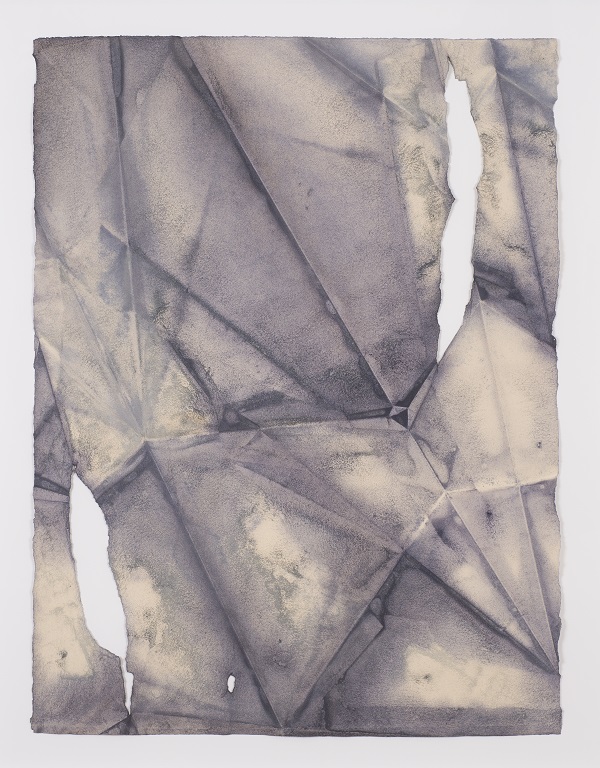
Martha Tuttle, Rupture (2015).
Photo: Jack Tilton Gallery.
She is also quick to acknowledge the political undertones of art forms like spinning and weaving, though she said these things weren’t necessarily part of her decision to adopt the medium.
She references feminist art historian Elizabeth Wayland Barber, who argues in her 1994 book Women’s Work that when string was invented between 20,000 and 30,000 years ago, it unlocked a number of new ways for the human race to both survive and thrive—suddenly enabling us to catch, carry, hold, and bind things—similar to what the harnessing of steam did for the Industrial Revolution.
Barber posits that if historians were to name prehistorical periods for the inventions of women in the same way they do the inventions of men, this period would have been called the “String Revolution.”
“There aren’t that many examples of it because cloth incinerates,” she said, “but they think weavings would serve as historical documents. So, if you were getting news of a war, it would be woven. But, then, that would suggest that women were the first historians,” she said with a smile. “So, I get excited that I can still use this same technology today.”
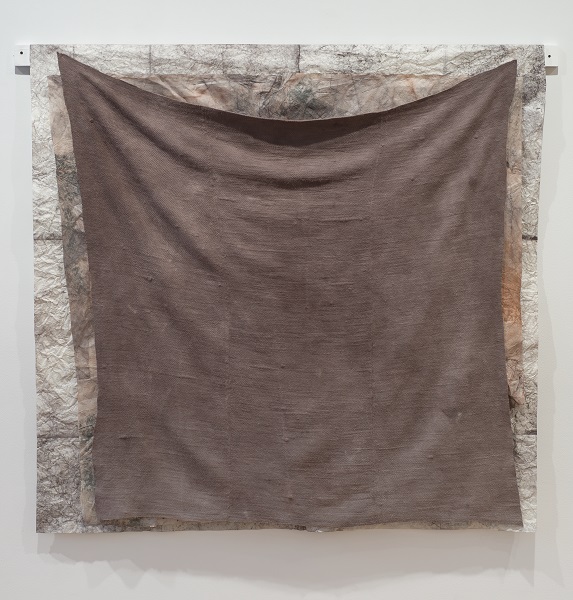
Martha Tuttle, Flowers (2015).
Photo: Tilton Gallery.